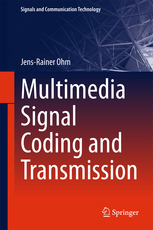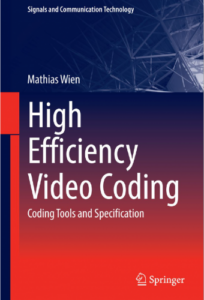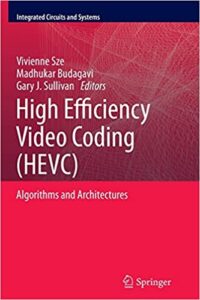Visual Media Communication
Lecturer: Dr.-Ing. Mathias Wien
Dates for the lecture and exercise see RWTHOnline.
This lecture provides an in-depth course in representation and compression of visual media signals, covering the topic from the theoretical foundations to practical state-of-the-art applications. The topics are are illustrated by various visual examples in the lecture. Tutorial projects are provided to deepen the understanding and the application of the lecture contents.
Course Contents
- Introduction:
Introduction and Background
Signal Processing Chain
Video Coding Systems
Structure of a 2D Video Sequence
Dimensions of 2D Video Signals
Multiview Scenario
360° Projection Formats - Fundamentals:
Concepts and terminology
Signal capture
Sampling and digital representation of visual media signals (single view, multiview, omnidirectional)
Multidimensional Fourier spectra
Statistical modelling
Correlation analysis
Autoregressive models
Markov models
Formation theoretic concepts - Perceptual Properties of Vision:
Properties of human vision
Objective and subjective quality assessment - Quantization and Coding:
Scalar quantization
Source coding theorem
Rate-distortion optimization
Entropy coding
Vector quantization - Methods of Signal Compression:
Run-length coding
Predictive coding
Transform coding
Hybrid video coding
Scalable and multiple-description coding
Coding structures for video compression - Still image and Intra-picture Coding:
Compression of binary pictures
Methods for color and gray-level pictures (predictive coding, transform coding, vector quantization, lossless coding, synthesis-based coding) - Inter-picture Coding:
Motion compensation
Coding of motion and side information - Residual Coding:
Transform design
Transform coefficient coding - Signal Enhancement:
Deblocking filtering
Sample-based filtering
Adaptive loop filtering - Applications and Standards:
Adaptation to channel characteristics
Media streaming; digital broadcast
Interoperability and compatibility
Definitions at systems level
Latest state of video coding standardization - Versatile Video Coding Standard:
Overview
Lecture Materials
The lecture Visual Media Communication is a successor of the lecture Multimedia Signal Coding and Transmission, held by Jens-Rainer Ohm from 2000 to 2019. Some elements of his lecture have been transferred into this lecture. Furthermore, the lecture includes major components of the previous lecture Video Coding: Algorithms and Specification.
Recommended Text Books
- Ohm, Jens-Rainer. Multimedia Signal Coding and Transmission. Springer Berlin Heidelberg, 2015. ISBN 978-3-662-46691-9 (ebook available via university library)

- Wien, Mathias. High Efficiency Video Coding – Coding Tools and Specification. Springer Berlin Heidelberg, 2015. ISBN 978-3-662-44276-0

- Sze, Vivienne, Budagavi, Madhukar, Sullivan, Gary J. (Eds.). High Efficiency Video Coding (HEVC) – Algorithms and Architectures. Springer International Publishing, 2014.



